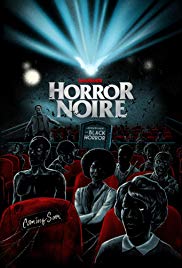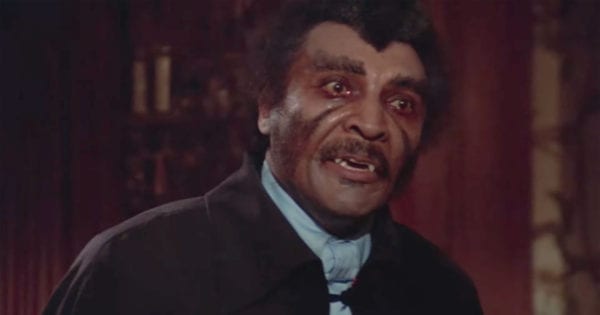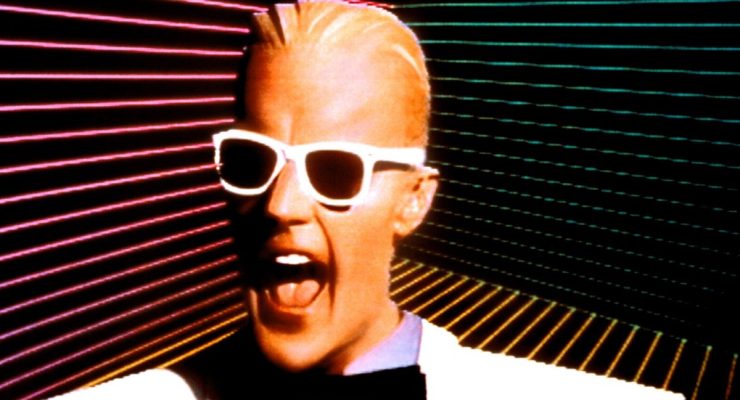Horror Noire: A History of Black Horror, 2019.
Directed by Xavier Burgin.
Featuring Jordan Peele, Keith David, Rachel True, Tony Todd, Miguel A. Núñez Jr., Loretta Devine, Paula Jai Parker, Ken Foree, Kelly Jo Minter, Richard Lawson, Ernest R. Dickerson, Rusty Cundieff, Ken Sagoes, William Crain, Tina Mabry, Meosha Bean, Tananarive Due, Ashlee Blackwell, Robin R. Means Coleman, Monica Suriyage, and Mark H. Harris.

SYNOPSIS:
An look at the history of black horror films and the role of African Americans in the film genre from the very beginning.

If horror documentaries were dependably as insightful, entertaining, and passionately constructed as Xavier Burgin’s Horror Noire: A History Of Black Horror, chances are you’d be watching more horror documentaries. Robin R. Means Coleman’s “Horror Noire” novel lays the foundation for writers Danielle Burrows and Ashlee Blackwell to expose African American treatments throughout genre representation from The Birth of a Nation to Get Out (and beyond). Experiences escape the mouths of subjects who, for too long, only saw their likened on-screen representation as throwaway pawns or called-upon help. Truths from filmmakers like William Crain (Blacula) and Rusty Cundieff (Tales From The Hood), or actors Rachel True (The Craft) and Tony Todd (Candyman). In a word? This Shudder Original is an “essential” cinematic retrospective that fills a void often chatted about, but rarely address on a large-stage format.
“Essential.” The word is – zero hyperbole – “essential.”
From my viewpoint – my place of learning from those with stories to tell – Horror Noire: A History of Black Horror plays like your favorite collegiate lecture. I sat there excited by awareness, immersed by perceptions unlike my own, and left with a richer sense of understanding thanks to an expertly curated crash-course. Such should come as no surprise with “Graveyard Shift Sisters” site runner and horror lifelonger Ashlee Blackwell so heavily involved (producing and co-writing). As a longtime follower of her work, that uncompromising dedication and “nerdy” love for promoting “Black Horror” she brings day-by-day sets sustained poignancy. From noteworthy talking heads to example cut-in clips to covered eras, Blackwell’s input is the documentary’s special sauce so to speak (not a knock to others involved, mind you).

As Blackwell spoke during the film’s Q&A, she made mention to landing interview participants who’d be more than just posh celebrity actors. Keith David “survives” The Thing and rebukes the “black characters die first myth.” Ken Foree’s racial significance throughout George A. Romero’s Dawn of the Dead is unprecedented in 1978. Richard Lawson (Scream Blacula Scream), Miguel A. Núñez Jr. (Return of the Living Dead/Friday The 13th: A New Beginning), the aforementioned Rachel True and Tony Todd – required names, not “popular” names. Actors who portrayed roles that shifted horror landscapes as viewers were finally able to connect with representation beyond “token” bullshit. These folks share frontlines tales of navigating the same bit-part roles for too long, and fully realize what power comes from leading an otherwise revolutionary charge.
Documentaries often fall victim to dusty historical regurgitation devoid of soulful interaction; no such issue for Horror Noire: A History of Black Horror. Burgin maps a narrative walkthrough that ties histories on-and-off screens: black actors as background props, rappers and horror, white roles rewritten for black talents, etc.
Imagine George A. Romero driving in his car – then unreleased Night of the Living Dead film reels stowed away (featuring Duane Jones’ lead role and mob-rule imagery) – as he hears the news of Martin Luther King Jr.’s assassination via radio. Crain remembers each fight against studio brass on Blacula for proper equipment and desegregated lensing. Ernest R. Dickerson reflects on Jada Pinkett Smith’s wave-making minority final girl in Tales From The Crypt: Demon Knight. These are creators, performers, who pushed through prejudices, trailblazed, and shaped lives such as Blackwell’s, who subsequently honors those very cinematic heroes.
Interviewees do not shy from touchy subjects, nor do they scold. Black culture in cinema is discussed with an even hand – blemishes to empowerment – as a means of ramping into Jordan Peele’s dam-breaking piledriver in Get Out. The communal aspect of players sitting in a staged theater, being shown clips throughout black horror history and seeing their reactions – incomparably more valuable than historians drably rattling off facts. Real warriors, honest energies, and this collective addressing of changing tides invigorate tone unlike preconceived documentary flatness.
Horror Noire: A History of Black Horror does everything a top-grade documentary should (with swagger, confidence, and sit-down-shut-up gravitas to boot). Knowledgeable analysis exposes fears and triumphs and pivotal personal benchmarks inside those most affected by theme. Surprise anecdotes paint pictures of dubious and often unfair times. The struggle, as kids might say, is represented in all its realness – but due justice prevails. John Boyega’s heroism in Attack The Block, Daniel Kaluuya’s survival in Get Out, William Marshall’s Blaxploitation reclamation (and sexiness) in Blacula – an encapsulation of nightmares that inspire nonetheless. Disciples of film, lovers of movies, students of race on camera, I urge: do *not* miss Horror Noire: A History Of Black Horror. Celebratory, urgent, and illuminating just as 2019 demands.
Flickering Myth Rating – Film: ★ ★ ★ ★ / Movie: ★ ★ ★ ★
Matt spends his after-work hours posting nonsense on the internet instead of sleeping like a normal human. He seems like a pretty cool guy, but don’t feed him after midnight just to be safe (beers are allowed/encouraged). Follow him on Twitter/Instagram/Letterboxd (@DoNatoBomb).












